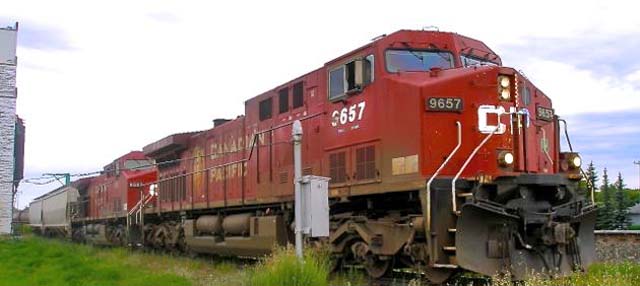

Ottawa Ontario - Canadian Pacific Railway's (CP) bid to halt new federal rules which allow more Prairie elevators to move loaded grain cars on
more than one railway has stopped at Canada's highest court.
The Supreme Court of Canada on Friday dismissed CP's appeal of an October ruling at the Federal Court of Appeal, a ruling which in turn dismissed CP's
application to have the Canadian Transportation Agency's (CTA) new rules on interswitching declared null and void.
The new interswitching rules, which took effect 1 Aug 2014 were meant to improve grain traffic from Prairie elevators to West Coast and Great Lakes/St.
Lawrence ports, by extending the interswitching rights up to 160 kilometres for grain and all other commodities moved by shippers in the three Prairie
provinces.
Interswitching rules commit one rail carrier to pick up cars from a shipper, then deliver them to another railway for the line haul.
The Canada Transportation Act had previously allowed shippers to use interswitching for only up to a 30 kilometre radius.
Ninety-four percent of grain elevators are served by just one railway and the 30 kilometre limit allowed just 14 elevators in that service radius to make a
deal with a competing rail line, be it in Canada, or the U.S.
The federal government said at the time that extending the interswitching limit to 160 kilometres would bring the number of eligible elevators up to 150, and
emphasized the rules do not confer "joint running rights" to railways.
CP, in its filing with the Federal Court of Appeal in September, alleged that extending interswitching violated the Act and could impose up to $13.3 million
per year in unrecoverable costs on the company.
CP in September also alleged the extended interswitching rules were politically motivated, arbitrary, and beyond CTA jurisdiction.
The company also alleged the CTA had rushed the drafting of the new rules to meet the government's wish of having changes ready for the start of the 2014-2015
crop year.
At issue before the Supreme Court was CP's allegation that the CTA had "acted improperly in issuing the new rules by following government directives to
expand the interswitching distance limit in the Prairie provinces," the top court wrote Friday.
CP's lawyers conceded that the CTA is empowered to issue those regulations, the court wrote, adding that the company's complaint was not with the content of
the regulations, but "with the process followed by the agency."
However, the top court added, CP's lawyers also conceded that the CTA is "presumed to have acted properly in making its decision" to issue the new
interswitching rules.
The question, the top court wrote, is whether CP brought forward any facts as evidence which would show that presumption to be false, and "in our view, it
has not done so."
The Supreme Court's decision also awards costs to the federal Attorney General's office, representing the government and the CTA.
Anonymous Author.


